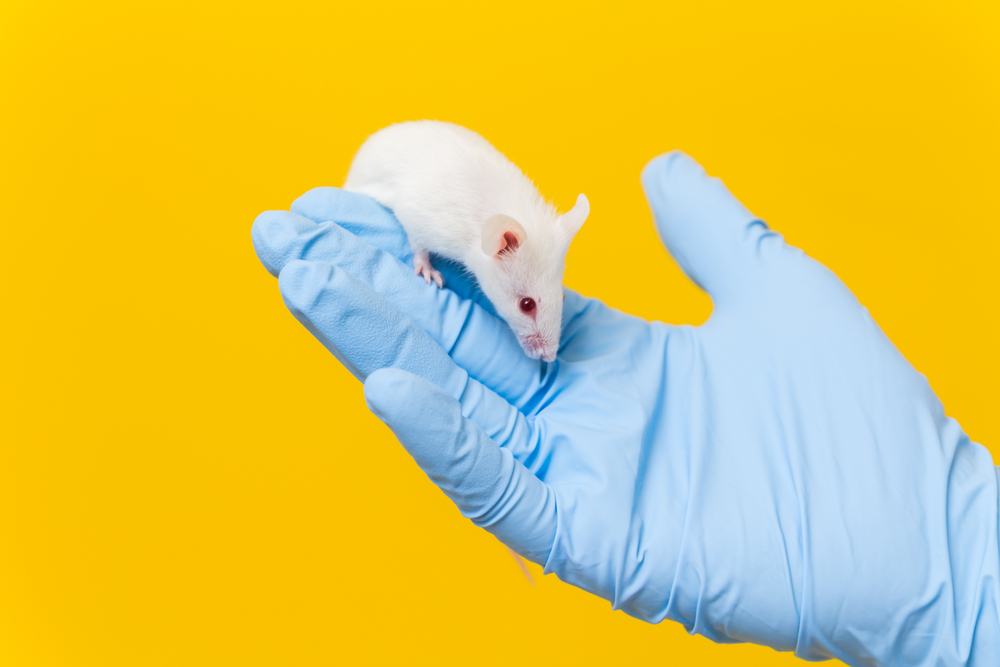Stem Cell Injections May Treat Gaucher Disease with Brain Involvement, Mouse Study Finds

Stem cell therapy given via intravenous injection eased symptoms and prolonged survival in a mouse model of Gaucher disease with neuronal symptoms, a proof-of-concept study reports.
The study, “Intravenous infusion of iPSC-derived neural precursor cells increases acid β-glucosidase function in the brain and lessens the neuronopathic phenotype in a mouse model of Gaucher disease,” was published in Human Molecular Genetics.
Gaucher disease results from mutations in the gene that codes for the enzyme glucocerebrosidase (GCase), causing this enzyme to function poorly or exist at very low levels.
Treatments like enzyme replacement and substrate reduction have shown efficacy at controlling many aspects of Gaucher disease, but aren’t usually helpful in treating brain manifestations, since the body tightly regulates what substances can get into the brain.
The idea behind stem cell therapy is to replace cells encoding the defective GCase enzyme with cells that have a healthy version of the gene. For the brain, such therapies would typically require an operation to directly implant the cells in the brain; again, movement in and out of the central nervous system is regulated very tightly.
However, some types of stem cells — specifically, certain neural precursor cells (NPCs) that, as their name suggests, can differentiate into neurons and other kinds of brain cells — express a protein called Very Late Antigen-4 (VLA-4), which gives these cells a sort of ‘special clearance,’ allowing them to move directly from the bloodstream into the brain.
In theory, these cells could be administered by just injecting them into the bloodstream. Would this be effective for treating Gaucher disease?
To find out, researchers turned to a mouse model of Gaucher with brain symptoms, called the 4L;C* mouse. They first collected skin cells (fibroblasts) from healthy mice and, through a series of biochemical cues, converted them into stem cells and then into NPCs. Next, the researchers sorted out only those NPCs that expressed VLA-4, and grew out those cells for injection into the mice.
It should be noted here that, in an actual clinical setting, it’s likely that a patient’s own cells would need to be used, reducing the risk that the patient’s body would reject the cells.
But lab mice are very genetically similar to each other, so the researchers used NPCs derived from healthy mice, as these cells already had a correct version of the gene, and the researchers were more interested in whether a VLA-4-based blood injection would work at all.
Mice were injected with the cells once, twice, or three times per week, with some mice given sham injections to serve as a control group. Each injection consisted of 1 million cells, and the cells were programmed to express a fluorescent molecule so they could be easily seen.
Researchers first confirmed that the injected cells were implanting in the mice’s brains. They looked at the brains of mice injected twice a week for a few weeks, and found tens of thousands of fluorescent cells in their brains. Although numerically this represented only 1%–2% of the total cells injected, it demonstrated the validity of this approach.
Furthermore, these injections had therapeutic benefits: compared to control mice, animals given the NPCs lived longer and had less severe motor defects; the brains of these mice also had lower levels of markers associated with inflammation and neural cell death, and higher levels of makers associated with neural cell growth.
Furthermore, the cell-injected mice had more GCase activity: a 28%–35% increase after six injections compared to the sham-injected control mice, depending on the region of the brain studied, and a 16% increase after eight injections, when the mice were terminal age. GCase activity in these mice reached about 12.25% of what is seen in healthy mice.
This cell treatment also reduced levels of GCase substrates; for instance, glucosylceramide levels were 34% lower after six injections than in controls. These levels were still around seven times higher than that seen in healthy mice, but when the mice were terminal age, a difference no longer existed between treated and control mice in terms of substrate levels.
Researchers attribute this “reduced sustainability of therapeutic effect” to “the rapidly progressive disease in this mouse model,” and suggest that starting treatment at a younger age, before the disease develops, may increase its benefits.
Overall, these data act as a proof-of-concept study for this method of cell therapy: “Our studies demonstrate the potential efficacy of iPSC [stem cell]-derived NPC therapy for [Gaucher disease that affects the nervous system], and provide a framework for personalized medicine using iPSC-derived NPCs as a specific, effective, non-invasive, and autologous cell therapy,” the researchers wrote.



